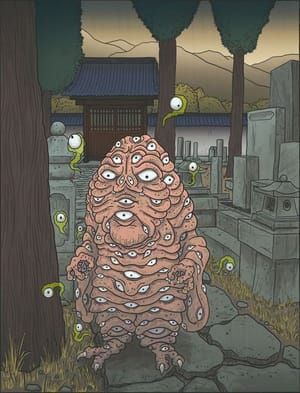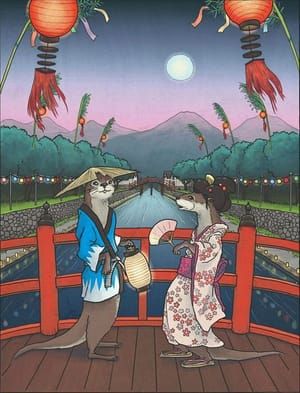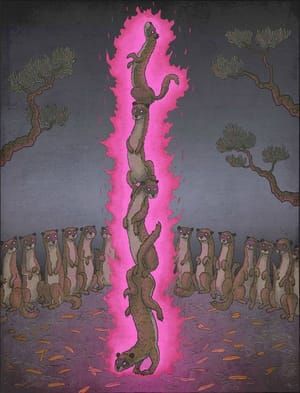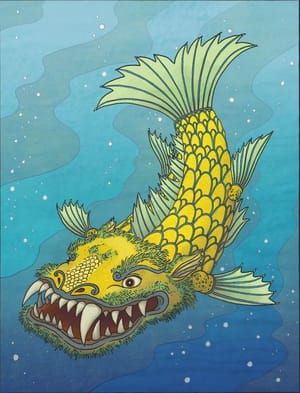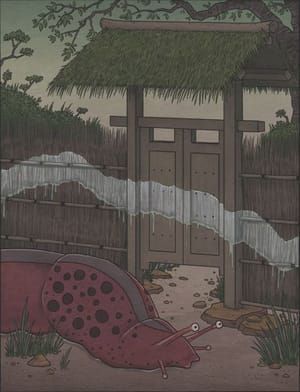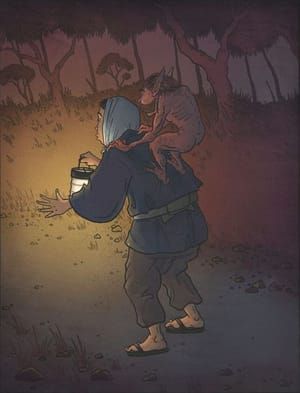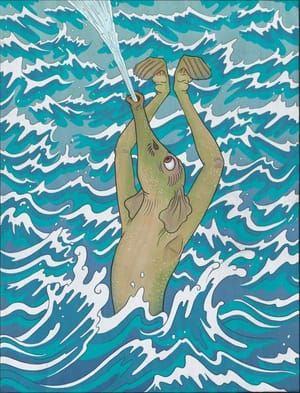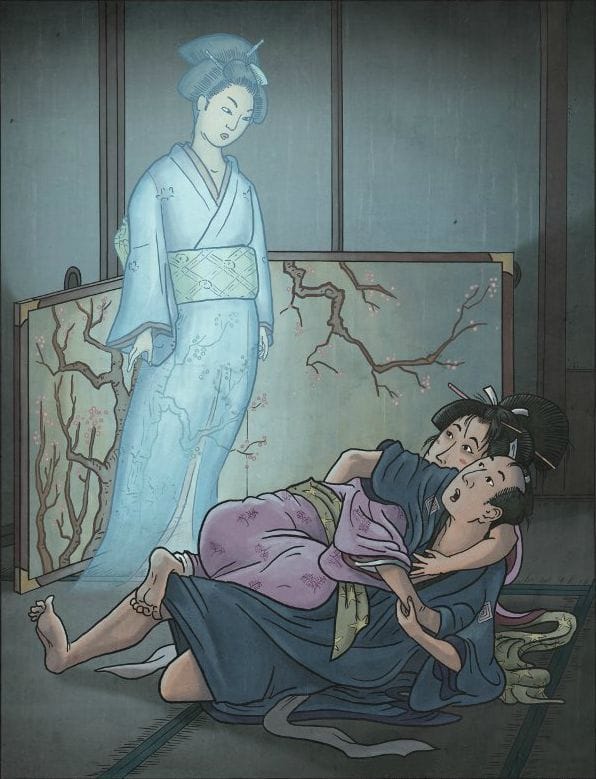

Ikiryō, 2013
Matthew Meyer
生霊
Ikiryō are the souls of still-living people which have temporarily left their bodies and move about on their own. They appear just as the living person from which they spawn; sometimes they take on a ghostly, translucent form, while other times they are indistinguishable from a living person.
There are a number of common ways for ikiryō to appear: during a near-death-experience, fainting, intense passion or desire, intense hatred, or even as part of a curse. Ikiryō most commonly appear due to some intense emotion or trauma, and the owner of the soul is almost always unaware of the ikiryō’s existence. This can lead to some very awkward situations and misunderstandings.
Folk superstitions about ikiryō go back to before recorded history. According to ancient superstition, just before death the soul leaves the body and is able to walk around, making strange noises and doing other things outside of the body. This is especially common during wartime, and the ikiryō of soldiers even in far off lands are said to appear to their friends and loved ones moments before or after their deaths, in their war uniforms, to give one last goodbye. The souls of the soon-to-die and recently-deceased are also sometimes seen visiting nearby temples and praying for a few days after their deaths.
During the Heian period, ikiryō were a popular subject of stories. They were sometimes attributed to intense feelings of love. When a person (usually a woman) felt such intense passion and love, her spirit would detach from her body and haunt the object of her affection, whispering sweet things into his ears. Depending on the strength of her feelings, the ikiryō could even physically move her lover around. This was not romantic, however — people haunted in this way were often tormented to the point of extreme sickness by these ghosts.
The most common form on ikiryō is one born of rage and vengeance. Just as the ghosts of the dead can go after those who wrong them in life, an ikiryō can manifest from one living person to curse another. These are also usually unconscious manifestations, however a few famous examples of conscious manifestations of ikiryō curses exist. The pilgrimage of the hour of the ox (ushi no koku mairi) and ichijama (from Okinawa) are ceremonial curses in which a person consciously sends their soul from their body to hurt or to kill their enemies. Of course, this sort of black magic often has dire consequences for the performer as well as the target.
During the Edo period, ikiryō were considered a symptom of certain illnesses, such as the aptly-named rikonbyō, or “detached soul syndrome,” and kage no yamai, or “shadow illness.” These horrifyingly-named diseases were Edo period terms for sleepwalking and out-of-body experiences. For carriers of these illnesses, it was said that the soul could depart from the body at night, taking the person’s consciousness along with it. This would cause them to experience things from the ikiryō’s perspective as if they were actually doing it. A person might have false memories of things he didn’t do, or be accused of things he didn’t remember. Some people even experienced meeting their own selves, as if they had a doppelganger.
Superstitions about ikiryō have persisted into modern times, particularly those dealing with people appearing to family members and friends on or around the times of their deaths. The idea of the soul leaving the body and experiencing things during out of body experiences persists as well, and remains an unexplained phenomenon.
Matthew Meyer
artistArthur
Wait what?
